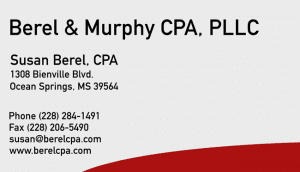As part of the Coronavirus Aid, Relief, and Economic Security (CARES) Act, signed into law March 27, many small business owners were able to apply for – and receive – a loan of up to $10 million under the Paycheck Protection Program (PPP). Businesses – including nonprofits, veterans’ organizations, Tribal entities, self-employed individuals, sole proprietorships, and independent contractors – that were in operation on February 15 and that have 500 or fewer employees are eligible for the PPP loans. If the loan proceeds are used as specified, business owners may apply to have the loan forgiven.
Here’s what you need to know about loan forgiveness under the PPP:
Covered Period
The loan covers eight weeks (56 days) of payroll, rent, mortgage interest, and utility expenses. Employers must keep employees on their payroll through June 30. Generally, the first day of the covered period is the same day as the loan disbursement. For example, if the loan proceeds were received on Wednesday, April 22, that is the first day of the covered period. The last day of the covered period would then be Tuesday, June 16.
Alternate Payroll Covered Period. If you pay your employees weekly or bi-weekly, you may elect to have the eight-week (56-day) period begin on the first day of the first pay period following the PPP loan disbursement date. In this case, if the loan proceeds were received on Wednesday, April 22, and the first day of the first pay period following the loan disbursement is Monday, April 27, the first day of the Alternative Payroll Covered Period is April 27 and the last day of the Alternative Payroll Covered Period is Sunday, June 21.
Eligible Expenses
PPP loans cover both payroll costs and nonpayroll costs; however, to be eligible for loan forgiveness, 75 percent of the PPP loan proceeds must go toward payroll costs, with the remaining 25 percent toward nonpayroll costs. For example, a business owner that received loan proceeds of $250,000 must use $187,500 of that amount on payroll costs to be eligible for loan forgiveness. The remaining $62,500 can be used to pay nonpayroll costs as specified below.
If your business does not meet the 75 percent requirement, there will be a proportionate reduction in loan forgiveness – not a complete loss.


